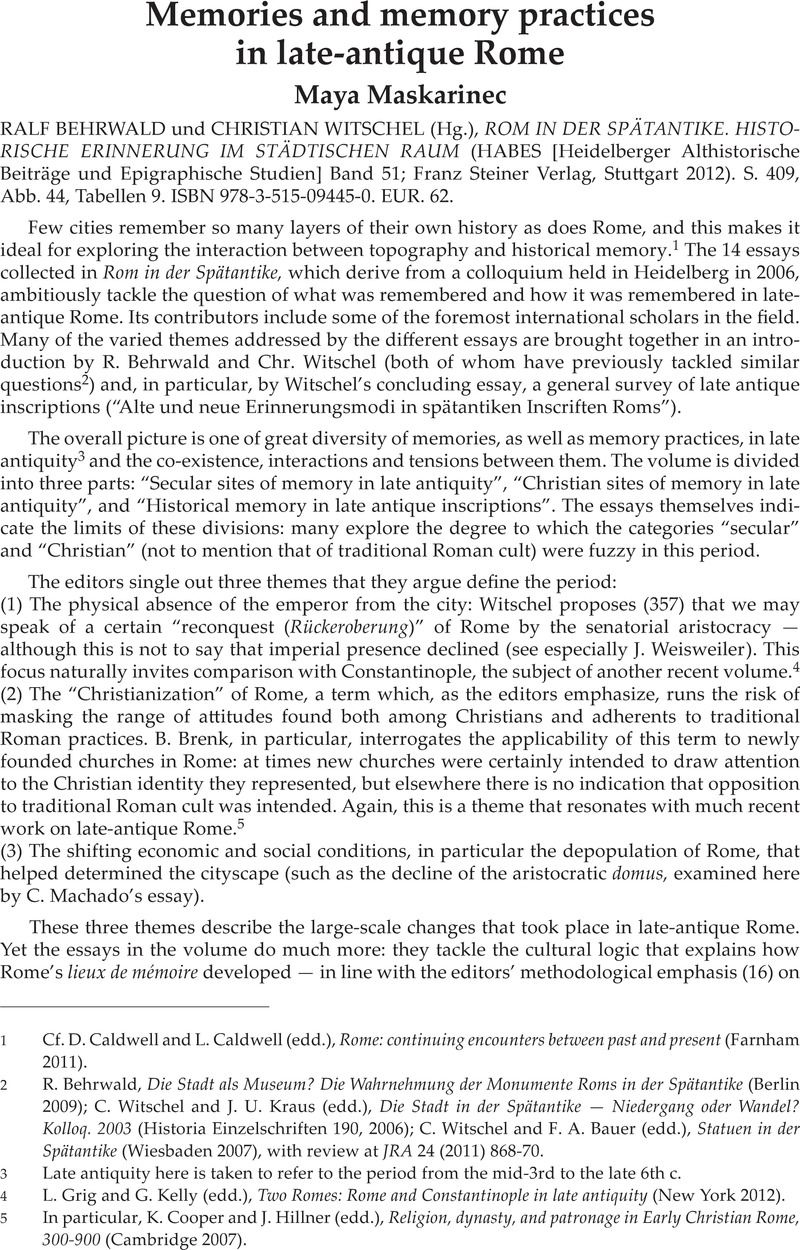No CrossRef data available.
Published online by Cambridge University Press: 27 November 2014

1 Cf. Caldwell, D. and Caldwell, L. (edd.), Rome: continuing encounters between past and present (Farnham 2011)Google Scholar.
2 Behrwald, R., Die Stadt als Museum? Die Wahrnehmung der Monumente Roms in der Spätantike (Berlin 2009)CrossRefGoogle Scholar; Witschel, C. and Kraus, J. U. (edd.), Die Stadt in der Spätantike — Niedergang oder Wandel? Kolloq. 2003 (Historia Einzelschriften 190, 2006)Google Scholar; Witschel, C. and Bauer, F. A. (edd.), Statuen in der Spätantike (Wiesbaden 2007)Google Scholar, with review at JRA 24 (2011) 868–70Google Scholar.
3 Late antiquity here is taken to refer to the period from the mid-3rd to the late 6th c.
4 Grig, L. and Kelly, G. (edd.), Two Romes: Rome and Constantinople in late antiquity (New York 2012)CrossRefGoogle Scholar.
5 In particular, Cooper, K. and Hillner, J. (edd.), Religion, dynasty, and patronage in Early Christian Rome, 300-900 (Cambridge 2007)CrossRefGoogle Scholar.
6 Cf. now the same author's “From equality to asymmetry: honorific statues, imperial power, and senatorial identity in late-antique Rome,” JRA 25 (2012) 319–50Google Scholar.
7 Cf. Boglia, C., McKitterick, R. and Osborne, J. (edd.), Rome across time and space: cultural transmissions and the exchange of ideas c.500-1400 (Cambridge 2011)Google Scholar.